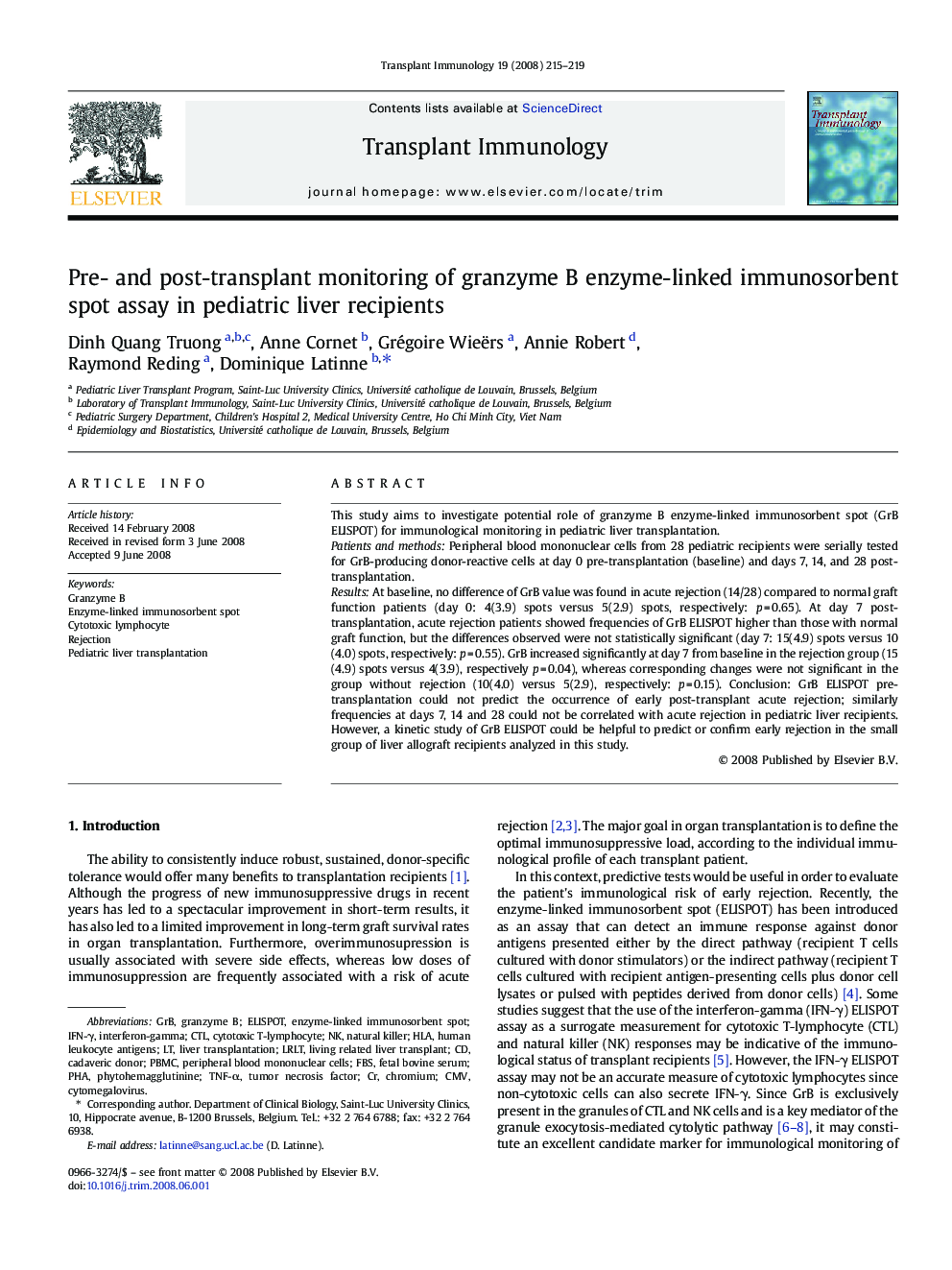| Article ID | Journal | Published Year | Pages | File Type |
|---|---|---|---|---|
| 3392578 | Transplant Immunology | 2008 | 5 Pages |
This study aims to investigate potential role of granzyme B enzyme-linked immunosorbent spot (GrB ELISPOT) for immunological monitoring in pediatric liver transplantation.Patients and methodsPeripheral blood mononuclear cells from 28 pediatric recipients were serially tested for GrB-producing donor-reactive cells at day 0 pre-transplantation (baseline) and days 7, 14, and 28 post-transplantation.ResultsAt baseline, no difference of GrB value was found in acute rejection (14/28) compared to normal graft function patients (day 0: 4(3.9) spots versus 5(2.9) spots, respectively: p = 0.65). At day 7 post-transplantation, acute rejection patients showed frequencies of GrB ELISPOT higher than those with normal graft function, but the differences observed were not statistically significant (day 7: 15(4.9) spots versus 10(4.0) spots, respectively: p = 0.55). GrB increased significantly at day 7 from baseline in the rejection group (15(4.9) spots versus 4(3.9), respectively p = 0.04), whereas corresponding changes were not significant in the group without rejection (10(4.0) versus 5(2.9), respectively: p = 0.15). Conclusion: GrB ELISPOT pre-transplantation could not predict the occurrence of early post-transplant acute rejection; similarly frequencies at days 7, 14 and 28 could not be correlated with acute rejection in pediatric liver recipients. However, a kinetic study of GrB ELISPOT could be helpful to predict or confirm early rejection in the small group of liver allograft recipients analyzed in this study.
